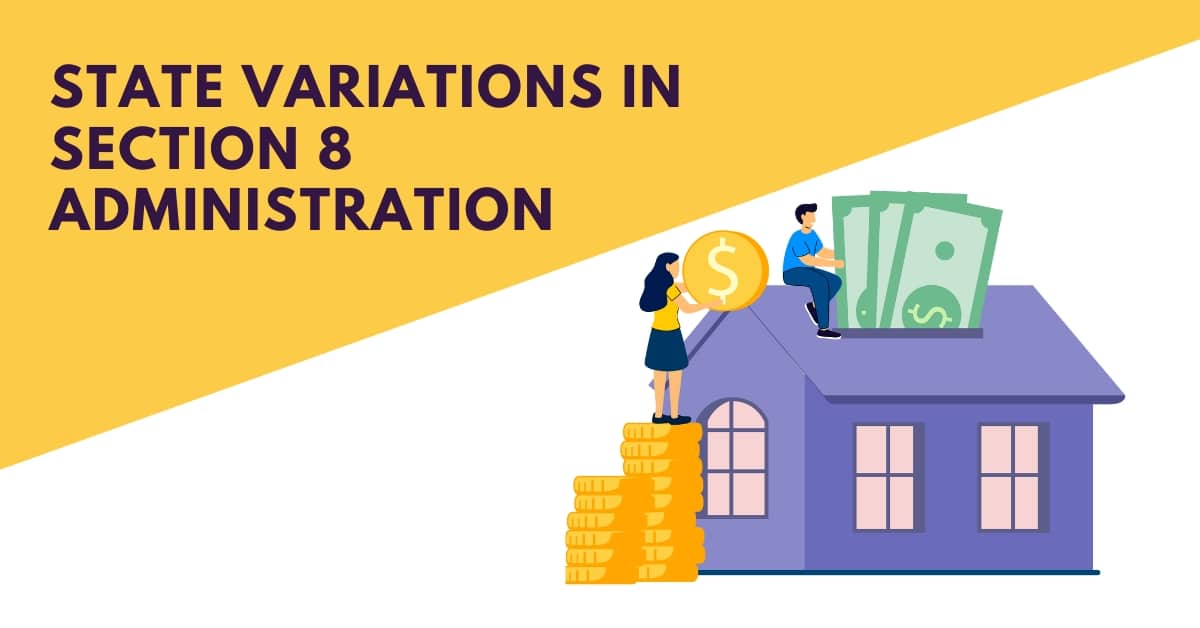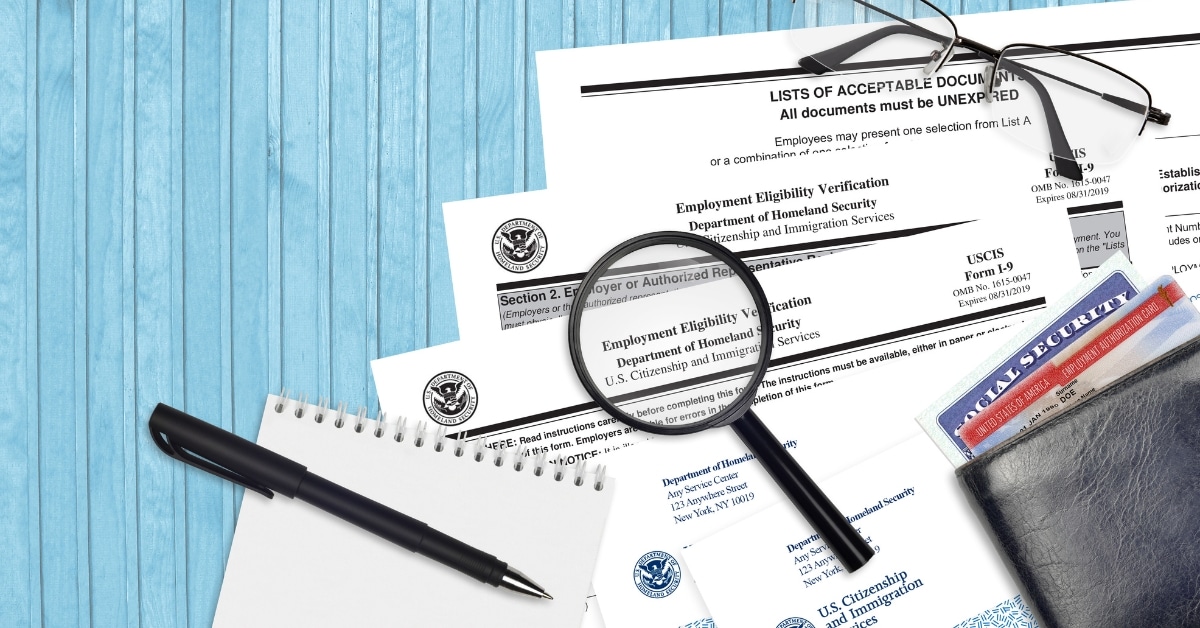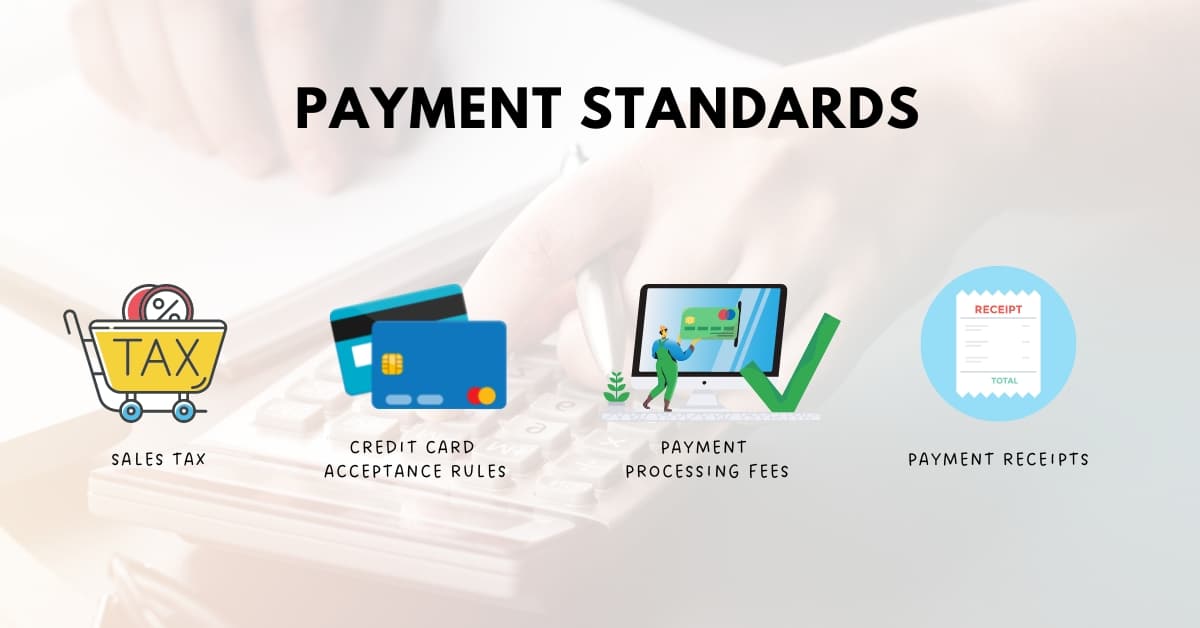Are you familiar with Section 8 housing? It is a federal government program that helps low-income families and individuals pay for comfortable, safe housing. But did you know that the way each state administers the program can vary significantly?
In this blog post, we’ll take a look at the differences between states in administering Section 8 housing and the implications for those who participate in the program. We’ll also discuss how to find out what is available in your specific state. So, read on to learn more about Section 8 housing administration from state to state!

Section 8 Housing Vouchers and Their Purpose
The government gives people money to help them pay for housing. This is called the Section 8 program. To get help from the government, people must meet income requirements and be U.S. citizens or have an eligible immigration status. People can use their vouchers to rent any property that meets standards set by the local public housing agency (PHA).
- To provide safe, decent, and sanitary housing for eligible households by subsidizing a portion of their rent payments.
- To help very low-income families, elderly persons, and persons with disabilities access affordable rental units or subsidized units in private markets.
- To pay a portion of tenants’ rent directly to the landlord so that tenants only need to pay a fraction of their monthly income towards rent.
- To give recipients more opportunities for mobility which can lead to enhanced employment opportunities and improved educational options for their children.
- To enable PHAs to respond faster and more efficiently to changes in local market conditions such as shifts in population or rental rates.

Explanation of State-Level Administration of the Program and Its Implications
State-level administration of the Section 8 housing voucher program consists of individual state public housing authorities (PHAs) that have been granted the responsibility to manage and administer the federal rental assistance program.
Each PHA is given the flexibility to decide how it administers the voucher program, including:
- how many households are served
- what qualifications applicants must meet to be eligible for assistance
- how much rent support can be provided
By having state-level control over Section 8 voucher programs, PHAs can respond faster and more efficiently to changes in local market conditions such as shifts in population or rising rental rates.
This helps them give out vouchers to families who need them promptly. But this also means that different states have different rules about who gets vouchers, how long people have to wait for them, and whether or not they can pick and choose who gets them. The state government can have an impact on how easy it is to find affordable housing. This is because some states only have a limited amount of money to give out. This means that not everyone can get help from the state. Also, some states might only help certain types of people who need housing.

Eligibility Requirements
The federal government establishes basic eligibility requirements for applicants of the Section 8 Housing Voucher Program. Generally, applicants must be US citizens or legal residents and meet certain income criteria to qualify for the program. In addition, all adults over the age of 18 in the household must pass a criminal background check.
Federal Eligibility Requirements
Though these are the basic requirements set forth by the federal government, states can modify or add to them as they see fit. For instance, some states may impose additional restrictions on where voucher holders can use their vouchers or require that families first use other forms of housing assistance before being eligible for Section 8.
Or they may impose stricter income thresholds than those set forth by the federal government so that fewer households participate in their program.
Examples of state-level eligibility differences
Examples of state-level eligibility differences include Texas:
- Which requires that all adults over 18 submit fingerprints and submit to a drug screening test;
- Arizona requires applicants to have worked at least 24 hours each week for six months before applying;
- California has income guidelines that are higher than those established by HUD (the Department of Housing and Urban Development).
Additionally, California also requires that applicants first apply for local public housing assistance before being eligible for Section 8 vouchers.

Waiting Lists
Overview of the Section 8 Waiting List System
The Section 8 housing waiting list is a federally-mandated system used to manage rental assistance applications. It is based on the “first-come, first-served” principle and is generally open indefinitely until all available vouchers are claimed. The Housing Authority in charge of the program is responsible for both managing the waiting list and awarding vouchers when they become available.
The main purpose of the Section 8 waitlist system is to ensure that any eligible families or individuals who need rental assistance receive it. All applicants must meet certain requirements and provide documentation (e.g., proof of residency, income, and employment status) before being placed on the waiting list.
Once submitted, applications are added to the list according to the date/time of submission and remain there until a voucher becomes available. Unfortunately, due to limited funding most wait lists can be several months—or even years—long in some areas.
Explanation of how waiting lists may vary by state
Section 8 housing waiting lists can vary significantly from state to state, depending on the eligibility criteria set by each Housing Authority.
Here are some of the most common ways that wait-for lists may differ:
- Some states may require applicants to meet additional eligibility criteria beyond those outlined by HUD before being placed on the waitlist.
- Others might have specific preferences (e.g., veterans or disabled individuals) that can influence where someone falls in line concerning wait time.
- Some states may prioritize applications based on when they were received, while others may use a lottery system to randomly determine who is eligible for a voucher first.
- In some states, wait lists are kept on a local level and managed exclusively by the local housing authority rather than the state government.
- There may be different application processes for rural areas compared to more urban locations, as well as different requirements around income levels and asset ownership depending on where you live.

Factors that can impact wait times
Section 8 housing waiting lists can vary in length depending on a few different factors. Here are some of the most common ones that may influence wait times:
- Local demand and availability of units will affect how quickly someone can get off the list.
- Preference categories such as gender, age, veteran status, or disability will determine who is placed higher on the waitlist.
- Wait lists may have cutoff dates or lottery systems in place that could influence wait times.
- HUD (Housing and Urban Development) funding available can impact processing times and the number of people who will be added to the list.
- Certain states may have additional eligibility criteria that must be met before an applicant can join the waitlist. Furthermore, different rules might apply for rural and urban locations concerning income levels, asset ownership, and other factors. As such, understanding how these policies differ from one state to another can be key to determining an individual’s estimated wait time for Section 8 housing.
Payment Standards
Payment standards are a key element of public housing that many voucher recipients need to be aware of. These standards refer to the maximum amount of rent that HUD will or can pay to landlords for the rental units occupied by voucher holders.
The payment standard for a particular area is usually determined by HUD through an analysis of market conditions and local services within a given area or region.
This helps to keep payment rates consistent throughout areas, since there may be some variation in rental costs from location to location.
Discussion of How Payment Standards Can Vary by State
Payment standards can vary greatly between states, and understanding how they differ is an important part of managing a successful business. From sales tax to credit card acceptance rules, here’s a look at some of the areas in which payment standards may vary from state to state.

Sales Tax
Sales tax laws are complex and may vary widely from one jurisdiction to another. Depending on where the item being sold is located, there could be significantly different taxation levels for goods and services.
Credit Card Acceptance Rules
Many states have specific legislation related to credit cards. For example, some states require merchants to accept all major credit cards regardless of the merchant’s choice, while other states do not have such restrictions in place.
Payment Processing Fees
In addition to differences in sales tax requirements, some states also impose various fees on businesses that process payments with their customers’ debit and credit cards. These fees can add up quickly if you’re doing business across multiple jurisdictions, so it’s important to understand these regulations before signing any contracts or agreements.
Payment Receipts
States may also regulate how businesses provide receipts when they collect payments from customers. For example, some states require that merchants provide detailed receipts that include information such as a line-by-line breakdown of all items purchased, while others may only need a basic receipt that includes the total amount paid along with contact information for the customer and business owner.
These are just a few of the ways payment standards can vary between states. Businesses need to understand their obligations within each jurisdiction so they can comply with applicable laws and regulations without incurring unnecessary costs or putting customers at risk of fraud or theft.

Implications for Voucher Recipients
Voucher recipients need to be aware of the implications of payment standards for public housing in their area. These standards can have a significant effect on the cost of rent, as well as eligibility for certain programs.
Here are some key implications that voucher holders should understand:
- Payment standards could limit how much rent you can pay each month since it is determined by HUD’s analysis of market conditions and local services.
- Different states may enforce their mind or max limits on payments, which could affect your eligibility for voucher programs.
- Knowing what payment standards apply in your area can help you select more affordable housing options that fit within your budget and meet your needs.
- Understanding how different payment standards impact your monthly payments and eligibility could help you make better decisions when searching for housing.
Administrative Processes
Section 8 vouchers help people with housing. The government gives money to the states. Each state has a different process. HUD oversees the program and makes sure it runs smoothly.
There are different rules for the voucher program in different states. The local public housing agencies or housing authorities within each state get to decide how to manage and administer the program. They have to follow HUD regulations but they may also develop their policies or procedures related to how they allocate vouchers or access to rental units.
If a person wants help to pay for their rent, they can apply for Section 8 housing in their state. They will get a voucher that can be used to help pay the rent at any participating property in their chosen area. In some cases, people may need to wait for a voucher before they can get help with this program.
The Section 8 housing program helps people with low incomes pay for rent. If you want to apply for Section 8 housing, it is important to understand how the program works in your state or city. You can get more information by contacting the local PHA responsible for administering the program in your area. They will be able to tell you more about eligibility requirements and other important details about the process that are specific to your location.

Conclusion
The Section 8 housing voucher program is an important tool for providing affordable housing to low-income families and individuals. While the program is administered by HUD, each state has its own rules and regulations that can impact how vouchers are allocated and how easy it is to access affordable rental units.
Understanding these different policies can be key to ensuring you or your family receive the help you need to access affordable housing. Furthermore, understanding payment standard rules and their implications can also be key in helping people make informed decisions when looking for a place to rent. While the Section 8 housing program may have its own unique set of challenges, it remains an invaluable resource for individuals and families in need of assistance with rental payments.










